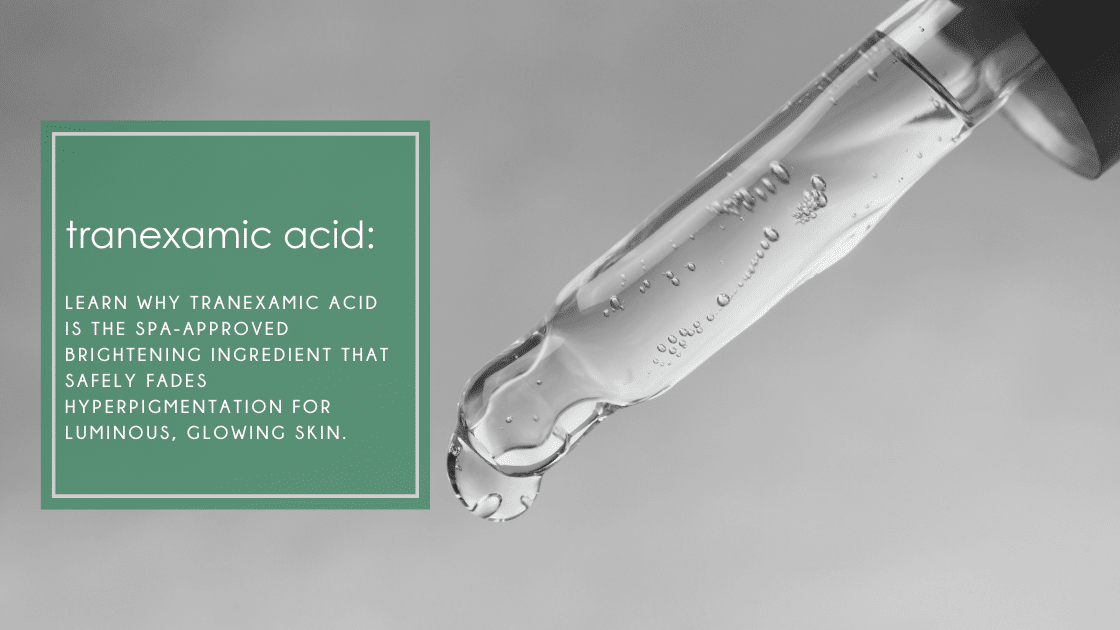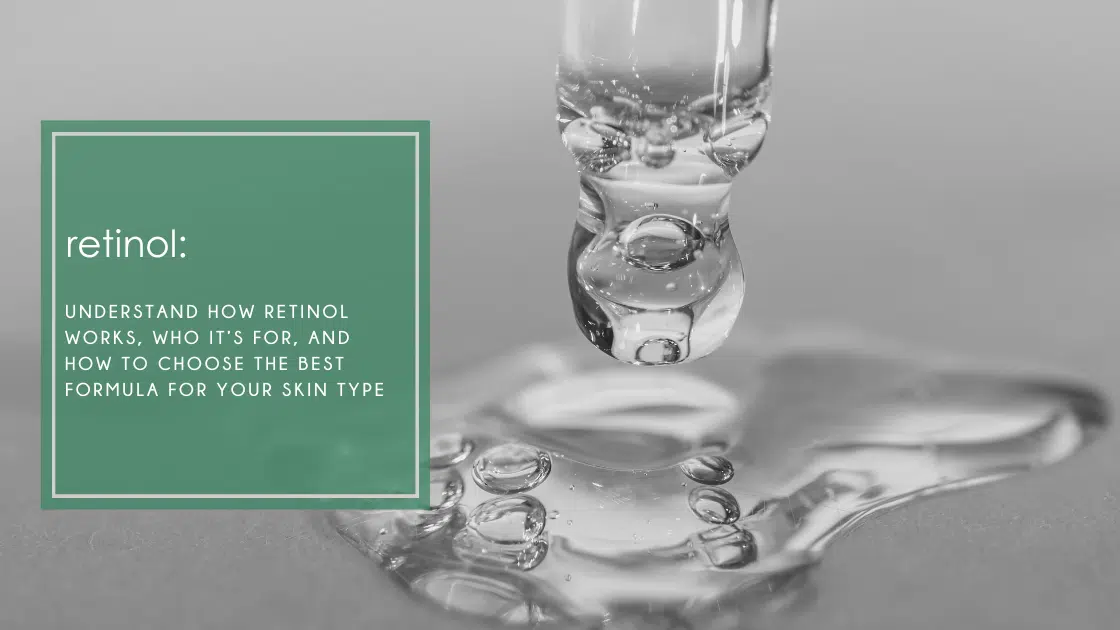Tranexamic Acid: Why We It’s Our Favorite
Tranexamic Acid: The Dermatologist-Approved Must-Have
Tranexamic acid might not be the most talked-about skincare serum, but it’s quickly becoming a favorite among estheticians and dermatologists, and for good reasons! This serum packs a powerful punch when it comes to skin brightening, often targeting dark spots, melasma, and uneven skin tone, to deliver a visibly brighter and more luminous complexion. In this guide, we’ll explore what tranexamic acid is, how it works, how to use it, the incredible benefits, and why you should make it part of your daily brightening skincare routine. Let’s dig in!
What is Tranexamic Acid?
Tranexamic Acid is a powerful amino acid-derived skincare ingredient that helps address dark spots, uneven skin tone, hyperpigmentation, and melasma. Also often known for its anti-melanogenic and anti-inflammatory properties, yet, it may cause irritation, redness, and flaking in sensitive skin types, so gradual introduction into your skincare routine minimizes this side effect. According to Science Direct, “Tranexamic acid (TA) is a plasmin inhibitor. Besides its antifibrinolytic effect, TA exerts anti-inflammatory, anti-melanogenic, and anti-angiogenic effects through its powerful inhibition of plasmin. Therefore, TA is widely used in the treatment of melasma.”
Plasmin is a protein found in the serum of our blood, specifically to aid in blood clotting.
In a year-long study done in 2009-2010 on 50 women with melasma that compared tranexamic acid (TA) to hydroquinone, an ingredient known for having undesirable side effects, and no longer legal in many countries. The study shows that tranexamic acid is as effective as hydroquinone but safer. PubMed published the results, “This study’s results introduce the topical TA as an effective and safe medication for the treatment of melasma.”
What is Hydroquinone?
For years, hydroquinone was the go-to for treating hyperpigmentation due to its skin bleaching agent to treat melasma. However, due to its toxic and carcinogenic risks, it has been banned in the U.S. and Europe. However, tranexamic acid offers a safer, more natural alternative that delivers impressive brightening results without damaging the skin barrier, making it a top spa-approved choice for improving skin tone safely.
What Causes Dark Spots?
Dark spots form when melanocytes (the cells responsible for our skin pigment) are overactive. However, triggers include excess sun exposure or sunburns, excessive heat, and inflammatory skin conditions that damage the melanocyte cells, which result in dark spots, known as hyperpigmentation, post-inflammatory marks, or melasma. Using tranexamic acid serum helps prevent excess pigment production, leaving your skin visibly brighter and more even.
How is Tranexamic Acid Used in Skincare?
Tranexamic acid prevents pigment production in melanocyte cells. It’s formulated into a serum and is applied to the skin, typically in the morning. We love to pair our serum with retinol at night for the enhanced effects; however, if you are not yet using retinol, we don’t recommend starting both ingredients together. The benefit of pairing retinol with tranexamic acid is that retinol targets the collagen and stimulates cell turnover, which means that the darker cells slough off quickly. Sunscreen is a MUST with this ingredient, especially because we are working to lighten hyperpigmentation and melasma. Sun and heat will increase melanocytes, which would be the opposite of what the serum is working at reducing.
Can You Use Tranexamic Acid Year-Round?
Absolutely! The word “acid” can trick us into believing that we are applying a harsh or exfoliating acid to the skin. Acid is a chemistry term. Tranexamic acid is best used in a serum form. Our favorite serum is a blend that includes niacinamide and licorice root extract. This combination of ingredients maximizes skin-brightening while maintaining skin hydration. We recommended using this serum in the morning. And we recommend using retinol at night. Pairing with retinol increases cell turnover. If you have been using retinol, we recommend using tranexamic acid 3 times a week to see how your skin responds.
Who Can Use Tranexamic Acid?
Anyone who is looking for skin brightening! If you’re dealing with sun damage, post-acne marks, or melasma, tranexamic acid is for you. However, those with active acne or inflammatory skin conditions (like eczema or psoriasis) may experience temporary purging. At Skin Deep Esthetics, we recommend treating these concerns first to ensure a smooth transition to brightening treatments.
Is Tranexamic Acid Safe During Pregnancy?
Yes, it’s generally considered safe during pregnancy. Still, it’s always best to consult your doctor before introducing any new active ingredient to your routine. This is a fairly newer ingredient and has not had extensive research like other active ingredients.
What Are The Disadvantages and Potential Side Effects?
While well-tolerated by most, some users may experience mild dryness, flaking, or redness. Start by using your serum three times per week and eventually increasing to daily use. If you are still experiencing dry skin, try layering it over a hyaluronic acid serum to boost hydration. For those with acne, eczema, and psoriasis, it can worsen your skin at first. At Skin Deep Esthetics, we like to treat the skin conditions first before adding this ingredient to minimize side effects or a flare-up from occurring. But as always, if irritation persists, your esthetician can help adjust your skincare routine.
Treatments to Pair with Tranexamic Acid?
For even faster brightening results, pair your tranexamic acid serum with professional spa treatments like:
- Chemical peels (series of 4–6 weekly sessions)
- Dermaplaning for smoother texture and glow
- Microchanneling in a series of 4-6 treatments every 3–4 weeks to boost serum absorption
Because this acid is gentle, you can continue using it during your peel or microchanneling series for enhanced results.
Ready to Get Started?
Visit our website to shop for skincare today. If you’re looking to boost results, book your peel, dermaplaning, or microchanneling treatment now! Questions? Drop them in the comments below!




